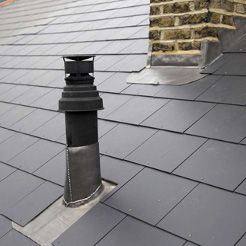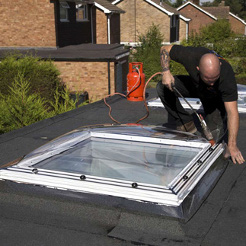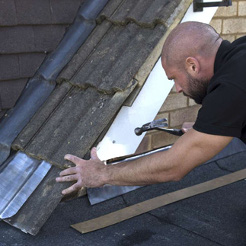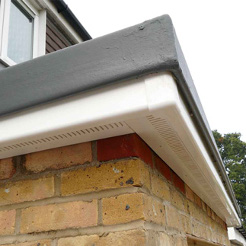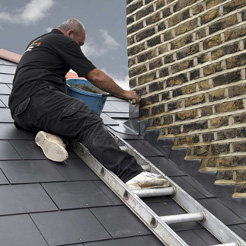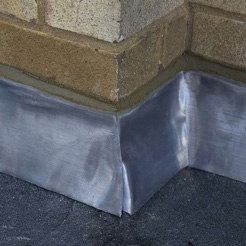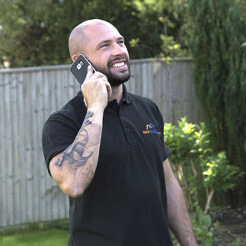Have you heard the term ‘roof flashing’ and not been sure what it means exactly? Don’t worry, you’re not alone! Unless you have had a problem with it you may not have come across it and you’re certainly not alone in that – it’s a question that we hear from time to time from clients. To help, we have put together a comprehensive guide on what it is and why you need it.
What is flashing?
Flashing is a way of protecting your roof from the elements, particularly from water coming in when it rains. It acts as a seal between the various joins across your roof tiles and any other things you may have on your roof – for example, chimneys, skylights, roof lanterns, dormer walls, etc. Those joints and joins are points of ingress for water and ice, so sealing them with flashing will help prevent leaks and damp problems inside your home by making your roof watertight.
What is it made of?
Traditionally, flashing was made of lead, so you may hear about lead flashing. Nowadays, you are more likely to find galvanised sheet metal, aluminium, copper and even rubber or plastic. Lead flashing is less popular due to its higher cost and the concerns of lead contamination. Our previous article on lead vs artificial flashing will tell you a little more about the pros and cons of each.
How does it work?
Flashing is placed anywhere there is a joint or join along your roof’s surface. This means that it’ll be along the sides in longer sheets and in shorter, stepped sheets along chimneys or slopes.
It is typically applied by using a soldering technique. When building a new roof the flashing is installed before the tiles are laid. If you need to have flashing replaced then you will probably have to remove two or three lines of tile on either side and re-lay them once the flashing work is complete. This will prevent damage to the tiles as the work is carried out and avoid any cracks around the tiles that may allow water to seep in.
What should you do if you find damaged flashing?
Flashing is hard-wearing, but it is does also take a beating when it comes to protecting your roof from the elements, so it will become damaged over time, particularly as it is placed over the most vulnerable areas of your roof. Regular maintenance is key to a long life. Don’t wait until you find a leak or moisture in your home before inspecting your flashing. Checks and inspections are key to identifying potential problems and dealing with them quickly before they become bigger and more expensive to repair.
Look for cracks, warping or lifting of the flashing along the length of it. If you spot any, get the specialists booked in for an inspection and repair, which will have to be done on a day with no rain and when the roof is dry.
For advice on flashing or for an inspection, repair or installation just give Roof Rescue a call. We are experts in anything to do with roofs, flashing included! Just call us on 020 3189 1618 and we’ll be out to take a look and put it right for you.

